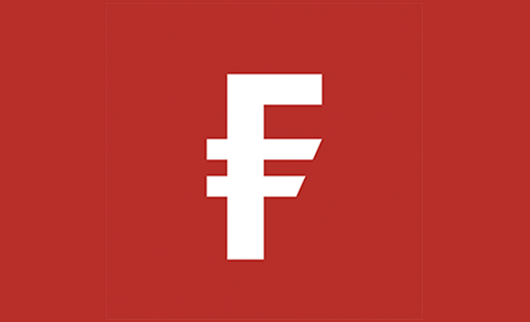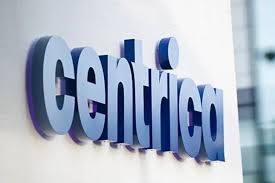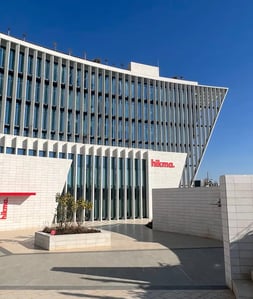Fidelity Asian Values PLC (LON:FAS) has announced its half-yearly results for the six months ended 31 January 2023.
Financial Highlights
- The net asset value of the Company increased by +10.3% for the six months ended 31 January 2023 outperforming the Comparative Index (MSCI All Countries Asia ex Japan Small Cap Index) which rose by +3.6% over the same timeframe.
- The ordinary share price return was +17.3%.
- The Company maintains net gearing of approximately 8% and reached the highest level under the Portfolio Manager’s tenure during the reporting period.
- The Portfolio Manager continues to find good small cap businesses at attractive valuations.
PORTFOLIO MANAGER’S HALF-YEARLY REVIEW
PERFORMANCE REVIEW
Over the six month period ended 31 January 2023, the net asset value total return of Fidelity Asian Values PLC was +10.3%, outperforming the Comparative Index, the MSCI All Countries Asia ex Japan Small Cap Index (net) total return (in Sterling terms) which rose by +3.6%. Over the same period, the Company’s share price total return was +17.3% due to a narrowing of the Company’s discount.
COMPANY’S NAV, SHARE PRICE AND COMPARATIVE INDEX TOTAL RETURNS (AS AT 31 JANUARY 2023)
| NAV total return (%) | Share Price total return (%) | Comparative Index total return (%) | |
| Tenure (since 1 April 2015) | +110.6 | +129.0 | +130.2 |
| 5 Years | +45.9 | +51.3 | +40.5 |
| 3 Years | +53.4 | +47.7 | +44.9 |
| 1 Years | +12.1 | +14.5 | -1.3 |
| 6 Months | +10.3 | +17.3 | +3.6 |
| 3 Months | +15.7 | +22.9 | +11.5 |
| ========= | ========= | ========= |
Source: Fidelity International, 31 January 2023. Total returns include net income reinvested. Comparative Index: MSCI All Countries Asia ex Japan Small Cap Index (net) total return (in Sterling terms).
The reporting period was one of two extremes; the first three months saw Asian markets fall due to inflationary concerns and persistent interest rate hikes. China and Taiwan underperformed the most due to geopolitical concerns, a slowing technology cycle and as a result of COVID-related restrictions, while the South Asian markets of India and Indonesia fared much better. However, China rallied sharply in the last three months of the reporting period as the government lifted COVID-related restrictions and decided to reopen its economy which led to a strong recovery.
We are not perturbed by these short-term gyrations in the stock market, and we continue to focus on investing in good businesses, run by good management teams that are available at a suitable margin of safety. Over time, we have found that our investment philosophy has led us to invest a significant amount of our capital in small cap value stocks.
From a style perspective, the small cap value segment has had a history of significant outperformance in Asia, as can be seen from the left-hand scale of the chart in the Half-Yearly Report. This has been driven by the superior earnings growth of value stocks compared to growth stocks as well as better cash returns, in terms of dividends. Against the right-hand scale of the same chart in the Half-Yearly Report, you can see that small cap value stocks are currently trading at close to all-time high discounts relative to both their large and small cap growth counterparts. We believe this should result in outperformance of these stocks versus broad indices in the coming years.
As we look at the performance over the last six months, we do not believe that there have been any major mistakes or errors of commission (where we lost a lot of money in stocks that we owned). Although our holdings in Japfa Ltd, WH Group and Shriram Finance detracted, we consider these to be temporary losses. The fall in their share prices increased our margin of safety and we have therefore increased our exposure to all three of these companies. Melco Resorts and Akeso were not held in the Company’s portfolio but performed extremely well and their absence detracted somewhat from the Company’s performance relative to the Comparative Index.
Meanwhile, the holdings in Chow Sang Sang, Bank Mandiri, Focus Media Information Technology, KEI Industries and Sinotrans performed well for the Company. These businesses have been retained in the portfolio as they continue to offer a sufficient margin of safety despite their recent gains.
For example, jewellery company Chow Sang Sang was the top contributor to returns and is one of the largest positions in the Company. It did well in this period as it recovered from extreme pessimism towards Chinese companies. The business also has a good strategy for growing its market share in China and is trading below its asset value of 14-15 HKD per share (mainly comprising gold inventory). It also currently delivers a 6-7% dividend yield while trading on a Price to Earnings ratio of around seven times.
Below are the Company’s top five key contributors and detractors over the review period.
KEY CONTRIBUTORS OVER SIX MONTHS (AS AT 31 JANUARY 2023)
Order | Security | Average Active Weight (%) | Gain/Loss (%) | Contribution to Relative Return (%) |
| Top 5 | ||||
| 1 | Chow Sang Sang Holdings International | +2.0 | +47.1 | +0.8 |
| 2 | Bank Mandiri (Persero) | +2.5 | +18.0 | +0.4 |
| 3 | Focus Media Information Technology | +2.2 | +20.2 | +0.4 |
| 4 | KEI Industries | +1.2 | +25.0 | +0.3 |
| 5 | Sinotrans | +1.9 | +18.7 | +0.3 |
| ————— | ————— | ————— | ||
| Total | +2.2 | |||
| ========= |
* Source: Fidelity International, 31 January 2023.
KEY DETRACTORS OVER SIX MONTHS (AS AT 31 JANUARY 2023)
Order | Security | Average Active Weight (%) | Gain/Loss (%) | Contribution to Relative Return (%) |
| Top 5 | ||||
| 1 | Japfa Ltd | +1.2 | -40.7 | -0.6 |
| 2 | WH Group | +1.4 | -18.8 | -0.3 |
| 3 | Melco Resorts* | -0.2 | n/a | -0.2 |
| 4 | Shriram Finance | +1.4 | -2.1 | -0.2 |
| 5 | Akeso* | -0.2 | n/a | -0.2 |
| ————— | ————— | ————— | ||
| Total | -1.5 | |||
| ========= |
* Not held in the Company’s portfolio
Source: Fidelity International, 31 January 2023.
INVESTMENT STRATEGY
Our strength lies in analysing businesses, finding best-in-class management teams and mis-priced stocks. Each stock in the portfolio is analysed and scrutinised against our investment philosophy and is owned purely for what it can contribute to returns, rather than whether or not it forms part of an index.
We are happy with the current shape of the Company’s portfolio, which comprises businesses that are dominant in their industries, earn good returns on capital and are available at attractive valuations. The following fundamentals apply to the Company:
· Return on Equity at 16.7% versus 13.4% for the Comparative Index (see chart in the Half-Yearly Report on the right-hand side).
· Net Debt/EBITDA* (ex-Financials) ratio for the Company’s portfolio is 0.56x versus 1.24x for the Comparative Index.
· Price to earnings: 9.5x versus 11.9x for the Comparative Index (see chart in the Half-Yearly Report on the left-hand side).
· Dividend yield at 4.8% versus 2.9% for the Comparative Index.
* EBITDA is net income (earnings) with interest, taxes, depreciation and amortisation added back.
OUTLOOK
Recent activity in Asian markets has been a useful reminder of why macroeconomic shifts are not necessarily a good guide to predicting what direction stock markets might take. While the reopening of China and India’s buoyant growth have undoubtedly galvanised the region’s stock markets, the timing has been unpredictable and the beneficiaries not always clear. Having said that, this type of environment does throw up opportunities that might be overlooked by others and we have maintained net gearing at approximately 8% to take advantage of this.
We believe that the companies we own are well-run businesses, where management teams are both competent and treat us as their partners and we are buying them at a discount to our assessment of their intrinsic value. Invariably, there will be those companies that disappoint and others that will exceed expectations in this new environment. We ensure that our investments are led by the reality of a company’s standing and whether that is reflected in its valuation. We believe that if we adhere to our process, we should be well positioned in the medium-term, irrespective of market and style cycles in the shorter-term.
NITIN BAJAJ
Portfolio Manager
18 April 2023
TWENTY LARGEST HOLDINGS AS AT 31 JANUARY 2023
The Asset Exposures shown below measure exposure to market price movements as a result of owning shares, equity linked notes and derivative instruments. The Fair Value is the actual value of the portfolio as reported on the Balance Sheet. Where a contract for difference (“CFD”) is held, the Fair Value reflects the profit or loss on the contract since it was opened and is based on how much the price of the underlying share has moved.
| Asset Exposure | Fair Value £’000 | ||
£’000 | (%)1 | ||
| Long Exposures – shares unless otherwise stated | |||
| Shriram Finance | |||
| Provider of hire purchase and lease finance for medium and heavy commercial vehicles | 13,829 | 3.5 | 13,829 |
| ————— | ————— | ————— | |
| Axis Bank | |||
| Private sector bank | 11,807 | 3.0 | 11,807 |
| ————— | ————— | ————— | |
| Chow Sang Sang Holdings International (shares and long CFD) | |||
| Jewellery retailer | 10,051 | 2.6 | 9,160 |
| ————— | ————— | ————— | |
| Bank Mandiri (Persero) | |||
| Banking institution | 9,479 | 2.4 | 9,479 |
| ————— | ————— | ————— | |
| Arwana Citramulia | |||
| Ceramics manufacturer | 9,464 | 2.4 | 9,464 |
| ————— | ————— | ————— | |
| Focus Media Information Technology (shares, long CFD and equity linked notes) | |||
| Advertising solution provider | 9,404 | 2.4 | 9,047 |
| ————— | ————— | ————— | |
| China Yongda Automobiles Services Holdings (shares and long CFD) | |||
| Investment holding company engaged in the sale of passenger vehicles and provision of related services | 8,873 | 2.3 | 7,325 |
| ————— | ————— | ————— | |
| Sinotrans (shares and long CFD) | |||
| Logistics, storage and terminal services provider | 8,074 | 2.1 | 6,448 |
| ————— | ————— | ————— | |
| CapitaL and India Trust (shares and long CFD) | |||
| Property trust | 7,543 | 1.9 | 6,786 |
| ————— | ————— | ————— | |
| BOC Aviation (long CFD) | |||
| Global aircraft operating leasing company | 7,505 | 1.9 | (110) |
| ————— | ————— | ————— | |
| Gold Road Resources | |||
| Gold production and exploration company | 7,391 | 1.9 | 7,391 |
| ————— | ————— | ————— | |
| Indofood CBP Sukses Makmur | |||
| Producer of packaged food products | 7,378 | 1.9 | 7,378 |
| ————— | ————— | ————— | |
| China Overseas Grand Oceans Group (shares and long CFD) | |||
| Real estate business | 7,341 | 1.9 | 3,890 |
| ————— | ————— | ————— | |
| Taiwan Union Technology (shares and long CFD) | |||
| Provider of professional support, value-added materials and advanced mass lamination service to the global electronics industry | 7,046 | 1.8 | 6,925 |
| ————— | ————— | ————— | |
| HDFC Bank | |||
| Private sector bank | 7,003 | 1.8 | 7,003 |
| ————— | ————— | ————— | |
| Granules India | |||
| Pharmaceutical manufacturing company | 6,920 | 1.8 | 6,920 |
| ————— | ————— | ————— | |
| WH Group | |||
| Meat and food processing company | 6,477 | 1.7 | 6,477 |
| ————— | ————— | ————— | |
| Texwinca Holdings | |||
| Production and sales of dyed yarns and knitted fabrics | 6,350 | 1.6 | 6,350 |
| ————— | ————— | ————— | |
| Qingdao Port International (shares and long CFD) | |||
| Provider of port services | 5,689 | 1.5 | 5,509 |
| ————— | ————— | ————— | |
| PTC India | |||
| Provider of power trading solutions in India | 5,483 | 1.4 | 5,483 |
| ————— | ————— | ————— | |
| Twenty largest long exposures | 163,107 | 41.8 | 146,561 |
| ————— | ————— | ————— | |
| Other long exposures | 263,086 | 67.3 | 222,413 |
| ————— | ————— | ————— | |
| Total long exposures before futures (144 holdings) | 426,193 | 109.1 | 368,974 |
| ========= | ========= | ========= | |
| Add: long futures | |||
| ————— | ————— | ————— | |
| MSCI All Countries Asia ex Japan Index Future 17/03/2023 | 4,205 | 1.1 | 251 |
| ————— | ————— | ————— | |
| Total long exposures | 430,398 | 110.2 | 369,225 |
| ========= | ========= | ========= | |
| Add: short exposures | |||
| ————— | ————— | ————— | |
| Short CFDs (8 holdings) | 9,568 | 2.4 | (55) |
| ————— | ————— | ||
| Gross Asset Exposure2 | 439,966 | 112.6 | |
| ————— | ————— | ————— | |
| Portfolio Fair Value3 | 369,170 | ||
| ————— | |||
| Net current assets (excluding derivative assets and liabilities) | 21,710 | ||
| ========= | |||
| Total Shareholders’ Funds/Net Assets | 390,880 | ||
| ========= | |||
1 Asset Exposure (as defined in the Glossary of Terms in the Half-Yearly Report) is expressed as a percentage of Total Shareholders’ Funds.
2 Gross Asset Exposure comprises market exposure to investments of £368,054,000 plus market exposure to derivative instruments of £71,912,000.
3 Portfolio Fair Value comprises investments of £368,054,000 plus derivative assets of £1,988,000 less derivative liabilities of £872,000 (per the Balance Sheet below).
INTERIM MANAGEMENT REPORT
BOARD CHANGES AND SUCCESSION
Grahame Stott stepped down from the Board at the conclusion of the Annual General Meeting (“AGM”) on 23 November 2022 having completed nine years. He was replaced as Chairman of the Audit Committee by Hussein Barma who joined the Board on 24 November 2022. Mr Barma is a non-executive Director and Audit Chairman of both Chaarat Gold Holdings Limited and Atalaya Mining plc. He is an independent Governor of the University of the Arts London and the Chairman and Member of the Finance Committee of the Oxford Centre for Islamic Studies. Mr Barma is a qualified Barrister and Chartered Accountant and holds a doctorate in corporate law.
As part of the Board’s succession plan, Kate Bolsover will step down from the Board at the conclusion of the AGM in November 2023. She will be succeeded as Chairman by Clare Brady who is currently the Senior Independent Director.
Michael Warren will have completed nine years on the Board by the AGM this year. However, given the changes to the Board in the past year and the ones to follow in November this year, he will remain on the Board for an additional year so as to ensure that institutional and historical knowledge of the Company is not lost. He will retire from the Board at the conclusion of the AGM in 2024.
DISCOUNT MANAGEMENT AND SHARE REPURCHASES
The Board has undertaken an active discount management policy, the primary purpose of which is to reduce discount volatility.
Repurchases of ordinary shares are made at the discretion of the Board, and within guidelines set by it and in light of prevailing market conditions. Shares will only be repurchased when this results in an enhancement to the NAV of the ordinary shares. In order to assist in managing the discount, the Board has shareholder approval to hold in Treasury any ordinary shares repurchased by the Company, rather than cancelling them. Any shares held in Treasury would only be re-issued at NAV per ordinary share or at a premium to NAV per ordinary share.
There continued to be turmoil in the world’s financial markets, especially in the first quarter of the reporting period, and at times the Company’s discount was volatile in reaction to this. The Board, therefore approved the repurchase of 569,000 ordinary shares into Treasury during the six month reporting period. Since then, no ordinary shares have been repurchased into Treasury or for cancellation.
PRINCIPAL RISKS AND UNCERTAINTIES
The Board, with the assistance of the Manager (FIL Investment Services (UK) Limited), has developed a risk matrix which, as part of the risk management and internal controls process, identifies the key existing and emerging risks and uncertainties faced by the Company.
The Board considers that the principal risks and uncertainties faced by the Company fall into the following categories: economic, political and market; discount management; cybercrime and information security; investment performance (including the use of derivatives and gearing); shareholder relationship; key person; environmental, social and governance (“ESG”), and business continuity and operational (including third-party service providers) risks. Other risks facing the Company are tax and regulatory risks. Information on each of these risks can be found in the Strategic Report section of the Annual Report for the year ended 31 July 2022 which can be found on the Company’s pages of the Manager’s website at www.fidelity.co.uk/asianvalues.
While the principal risks and uncertainties are the same as those at the last year end, the uncertainty continues to be heightened by the ongoing Russia and Ukraine conflict dominating political risks and industry concerns. There is geopolitical and economic uncertainty, in addition to events currently being faced globally such as the energy crisis, cost of living crisis, rising inflation, food supply crisis and the threat of cyberattacks on critical infrastructure. There continues to be tension between China and the US and also between Taiwan and China. More recently, the collapse of Silicon Valley Bank and the buyout of Credit Suisse by UBS Group has caused turmoil in the global banking sector and volatility in the markets. The quantum of risks continues to change and the Board remains vigilant in monitoring such risks.
Climate change continues to be a key emerging issue, as well as a principal risk, that is confronting asset managers and their investors. The Board notes that the Manager has integrated ESG considerations, including climate change, into the Company’s investment process. The Board will continue to monitor how this may impact the Company as a risk, the main risk being the impact on investment valuations and potentially shareholder returns.
Investors should be prepared for market fluctuations and remember that holding shares in the Company should be considered to be a long-term investment. Risks are mitigated by the investment trust structure of the Company which means that no forced sales need to take place to deal with any redemptions. Therefore, investments in the Company’s portfolio can be held over a longer time horizon.
The Manager has appropriate business continuity and operational plans in place to ensure the continued provision of services, including investment team key activities, which also covers portfolio managers, analysts and trading/support functions. It reviews its operational resilience strategies on an ongoing basis and continues to take all reasonable steps in meeting its regulatory obligations and to assess operational risks, the ability to continue operating and the steps it needs to take to serve and support its clients, including the Board.
The Company’s other third party service providers also have similar measures to ensure that business disruption is kept to a minimum.
TRANSACTIONS WITH THE MANAGER AND RELATED PARTIES
The Manager has delegated the Company’s portfolio management and company secretariat services to FIL Investments International. Transactions with the Manager and related party transactions with the Directors are disclosed in Note 13 to the Financial Statements below.
GOING CONCERN STATEMENT
The Directors have considered the Company’s investment objective, risk management policies, liquidity risk, credit risk, capital management policies and procedures, the nature of its portfolio, its expenditure and cash flow projections. The Directors, having considered the liquidity of the Company’s portfolio of investments (being mainly securities which are readily realisable) and the projected income and expenditure, are satisfied that the Company is financially sound and has adequate resources to meet all of its liabilities and ongoing expenses and can continue in operational existence for a period of at least twelve months from the date of this Half-Yearly Report.
This conclusion also takes into account the Board’s assessment of the ongoing risks from the war in Ukraine, significant market events and regulatory changes and continued evolving variants of COVID.
Accordingly, the Financial Statements of the Company have been prepared on a going concern basis.
Continuation votes are held every five years and the next continuation vote will be put to shareholders at the AGM in 2026.
BY ORDER OF THE BOARD
FIL INVESTMENTS INTERNATIONAL
18 April 2023
DIRECTORS’ RESPONSIBILITY STATEMENT
The Disclosure and Transparency Rules (“DTR”) of the UK Listing Authority require the Directors to confirm their responsibilities in relation to the preparation and publication of the Interim Management Report and Financial Statements.
The Directors confirm to the best of their knowledge that:
a) the condensed set of Financial Statements contained within the Half-Yearly Report has been prepared in accordance with the Financial Reporting Council’s Standard, FRS 104: Interim Financial Reporting; and
b) the Portfolio Manager’s Half-Yearly Review and the Interim Management Report above include a fair review of the information required by DTR 4.2.7R and 4.2.8R.
The Half-Yearly Report has not been audited or reviewed by the Company’s Independent Auditor.
The Half-Yearly Report was approved by the Board on 18 April 2023 and the above responsibility statement was signed on its behalf by Kate Bolsover, Chairman, Fidelity Asian Values.






































